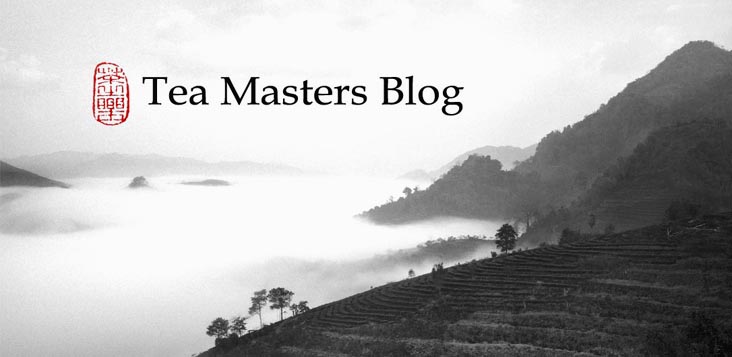This spring, I have added one more High Moutain tea to my selection:
Cultivar: Luanze/qingxin Oolong
Origin: Lushan
Elevation: 1600 meters
Harvested by hand on May 19th, 2013.
This late harvest date means very big leaves, since they have had more time to (slowly) grow. The key taste factor for high mountain Oolong is that these big leaves should remain tender, so that they only produce light flavors and flowers aromas. This is possible thanks to very cool nights that preserve the leaves freshness. These high mountain conditions create this incredible mix of strength and finesse, freshness and sweetness for the highest peaks.
The amazing thing with this Lushan high mountain Oolong, is that imitates these characteristics to perfection. Even side by side in a porcelain set, I have trouble to tell them apart! It's no wonder that the farmer has packaged these leaves in Da Yu Ling bags (for 150 grams). This wasn't my request, but shows how common and pervasive this kind of 'upgrading' is:
We've had this tea in fall 2011 already. (At that time already, the same mislabeling was going on...)
The characteristic of Lushan is a very rocky soil. This gives a dry/sweet aftertaste. The scents start very floral and finish with a slight orange skin smell. This is the most obvious detail that really distinguishes it from Da Yu Ling (and the price, of course).
All the rest, size, color, clarity... seem very similar. It's the king of copycats!
I will return to France to see friends and family from mid July to mid August: I won't be able to ship any order during this time. So, I recommend you place your order soon if you want to taste the cool energy of the high mountains this summer! I have never selected so many for the same season: Da Yu Ling, Lishan, Qilai shan, Alishan, 2 Shan Lin Shi and this Lushan! This is an excellent opportunity to compare and learn each peak's character and beauty.












3 comments:
This is a helpful post!
Great to have honest vendors like you !!
Thanks Steph and Kim!
It's even greater to have readers like you who value this detailed information!
It's easier to be honest than growing tea! What I am really happy about is the growing quality of my tea selection.
Post a Comment